#Vannozza Cattanei
Explore tagged Tumblr posts
Text









THE BORGIAS - 3.07: Lucrezia's Gambit
#the borgias#tvgifs#televisiongifs#perioddramaedit#perioddramasource#onlyperioddramas#perioddramacentral#weloveperioddrama#tvcentric#dailyflicks#cinemapix#filmtvtoday#tvfilm#tvfilmsource#rodrigo borgia#vannozza cattanei#jeremy irons#joanne whalley#tb 3.07#edits by irene#( the borgias )#( rodrigo borgia )#( vannozza cattanei )#( re: tv )
72 notes
·
View notes
Text


Period dramas dresses tournament: Blue dresses Round 1- Group D: Vannozza Cattanei, The Borgias (gifset with different sleeves) vs Juliet Capulet, Romeo and Juiet (pics set)
#period drama dresses tournament#tournament poll#tumblr tournament#polls#fashion poll#vannozza cattanei#giovanna dei cattanei#the borgias#romeo and juliet ballet#juliet capulet#romeo and juliet#blue r1
32 notes
·
View notes
Text

Oil painting, 1530s, Italian.
Portraying Vannozza Cattanei in a green and red dress.
Painted by Innocenzo da Imola.
Galleria Borghese.
#Innocenzo da Imola#Vannozza Cattanei#painting#dress#galleria borghese#16th century#Italy#1530s#1530s Italy#1530s painting#1530s dress#green#red
31 notes
·
View notes
Text







VANNOZZA & LUCREZIA The Borgias — 2.08
#tvedit#perioddramaedit#the borgias#theborgiasedit#vannozza dei cattanei#lucrezia borgia#zanisummers#userhayf#usersjen#usersavana#userjasmine#userhann#userclayy#tuseraixa#userzaynab#tuserlou#tusereliza#userfish#userlenna#by tha#QUEEN!!#MY BORGIA QUEEN <3
589 notes
·
View notes
Text
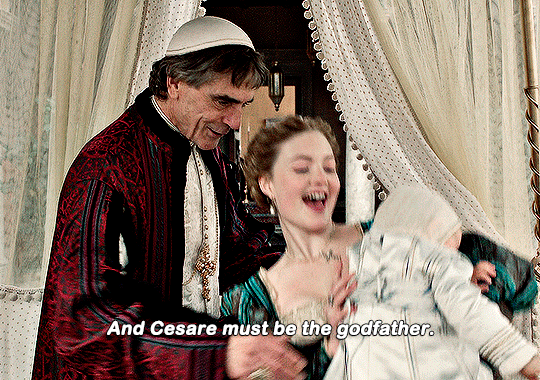
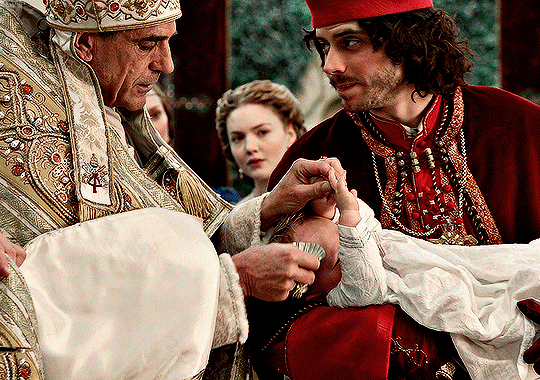
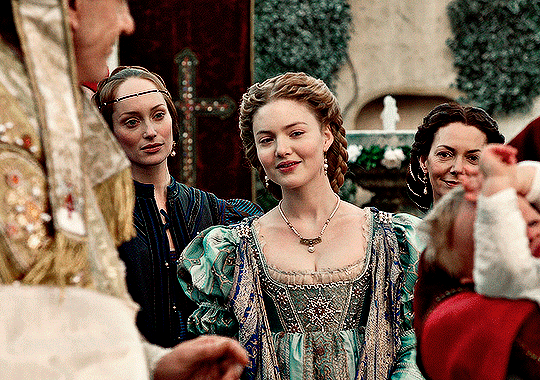
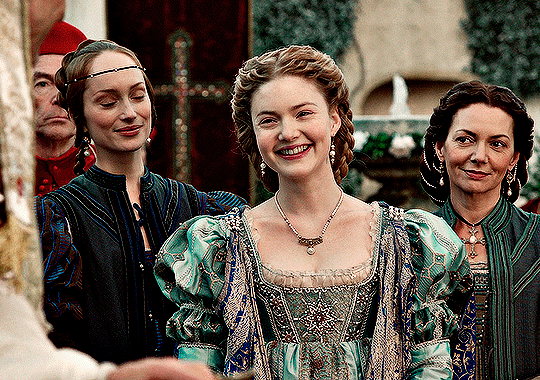

Amen.
#tvedit#perioddramaedit#theborgiasedit#the borgias#rodrigo borgia#lucrezia borgia#cesare borgia#vannozza dei cattanei#giulia farnese#giovanni borgia#tusereliza#userhayf#zanisummers#tuserlou#userfish#userclayy#userhann#tuseraixa#userzaynab#ours#by tha
759 notes
·
View notes
Text

there’s something about vannozza, cesare, and lucrezia being the only three holding up masks that i really love (they’re also my fave trio at the moment i think) and then the two very different gazes that giulia and lucrezia are giving their respective man??? EATING THAT UP!! and of course cannot forget how ceslu are wearing complimentary colors meanwhile juan is in red and black like an outsider….always the outsider to those two and always wanting in but can never get what he truly wants (to be loved and respected by them) THE TRAGEDY!! (side note: vannozza is wearing a color opposite what giulia and rodrigo are wearing much like how juan is wearing a different color combo from ceslu, BUT unlike juan if you look closer at her dress there are some pink/red tones in the details of the dress that suggest she still has some of rodrigo’s love and respect at least) also love the detail that is cesare holding what i assume is a devil’s mask in the same hand he wears his cardinal ring….the foreshadowing of him becoming more villainous by giving into the temptation he has to kill his own brother…GIMME MORE
#text#the borgias#lucrezia borgia#cesare borgia#juan borgia#vannozza dei cattanei#rodrigo borgia#giulia farnese#mel talks
22 notes
·
View notes
Text






"[Cesare's] dark hair, with a slight reddish cast, was loose and brushed his shoulders. In features, he resembled his mother, the redoubtable Vannozza dei Cattanei, far more than he did his father, having her long, high-bridged nose and large, almond-shaped eyes." — Sara Poole, The Borgia Mistress.
#finally felt motivated since tomorrow is a day off yayyy!!#cesare borgia#vanozza cattaneo#the borgias#theborgiasedit#perioddramaedit#onlyperioddramas#weloveperioddrama#perioddramasource#tvedit#cinemapix#dailyflicks#tvarchive#borgia#televisiongifs#tvfilmsource#filmtvcentral#filmtvtoday#tvgifs#by jen
260 notes
·
View notes
Text
LUCREZIA BORGIA // DUCHESS OF BISCEGLIE
“She was an Italian noblewoman of the House of Borgia. She was a key figure in the infamous Borgia family of the Italian Renaissance. She was the illegitimate daughter of Pope Alexander VI and his mistress, Vannozza dei Cattanei. She was accused of incestual relationships with both her father and brother, Cesare. Borgia reigned as the governor of Spoleto in her own right, and died aged thirty-nine after the birth of her tenth child.”


3 notes
·
View notes
Note
(01) So, about the badtouch templar idea, I'm curious about how the Auditore family would fare in this scenario. Considering that the Templars are bastards cruel enough to execute Petruccio in canon, I can't imagine how angry and scared Giovanni and Federico would be if the Templars tried to 'indoctrinate' Petruccio.
Continuation:
(02) Well, Giovanni, Maria and Federico (and eventually Ezio and Claudia) would already know and accept the risks of what getting captured by the Templars would entail, but having their most vulnerable and sickly family member (who didn't even know about the Assassin-Templar war) be mixed up in that? Templar heads would be rolling faster at that point
Now, the Italian Templar Rites have shown that they’re brutal and don’t mind getting their hands dirty. In this scenario, their best course of action would be to separate every Auditore they capture. Federico and Giovanni would struggle and they know how to play the ‘game’ so they would be kept close for now.
But Petruccio?
Petruccio will be shipped out of Firenze an hour or so after he gets captured. In the eyes of the Templars, he was still ‘pure’, could still be saved from the unreasonable ideologies of the Assassins. By the time Ezio saves both Federico and Giovanni, he would be long gone.
But the travel will be hard on Petruccio’s body and he will be bedridden. And the one to take care of him?
Vannozza dei Cattanei, mistress of Rodrigo Borgia.
Cue in: Petruccio becoming Rodrigo Borgia’s son and a Templar
13 notes
·
View notes
Text
Ванноцца
read it on the AO3 at https://ift.tt/HtiCKIa
by Lundo
Ванноцца совсем не подходила Родриго. Его родители мечтали о невестке из приличной семьи, с внушительным счётом в банке и безупречным воспитанием. Родриго рассеянно соглашался и готовился к скуке в неизбежной семейной жизни. Пока Ванноцца первая не заговорила с ним.
Words: 970, Chapters: 1/1, Language: Русский
Fandoms: Borgias - Ambiguous Fandom, The Borgias (Showtime TV)
Rating: Teen And Up Audiences
Warnings: No Archive Warnings Apply
Categories: F/M
Characters: Vannozza dei Cattanei, Rodrigo Borgia | Pope Alexander VI
Relationships: Rodrigo Borgia | Pope Alexander VI/Vannozza dei Cattanei
Additional Tags: Drama, Alternate Universe - Modern Setting, Romance
read it on the AO3 at https://ift.tt/HtiCKIa
0 notes
Text

Period dramas dresses tournament: Blue dresses Round 2 Bracket!- Wil be updating with the links once esch poll is posted
Group A
Laeta, Spartacus vs Wu MeiNiang, The empress of China
The princess, Donkey skin vs Isabella of France, Braveheart
Juliet Capulet, Romeo and Juliet vs Catherine Gordon, The white princess
Viola de Lesseps, Shakespeare in love vs Françoise d'Aubigné, L'aillée du roi
Group B
Max, Black sails vs Louise de la Tour, Outlander
Catherine of Russia, The great vs Orlando, Orlando
Umrao Jaan, Umrao Jaan vs Christine Daae, Love never dies
Parvati Chakraborty, Devdas vs Daphne Bridgerton, Bridgerton
Group C
Lajjo, Heeramandi: the diamond bazaar vs Mary Crawley, Downton abbey
Anne Shirley-Cuthbert, Anne with an E vs Katherine Lester, Lady Macbeth
Emily Dickinson, Dickinson vs Ann Walker, Gentleman Jack
Duchess d’Antan, Impromptu vs Isabelle de Merteuil, Dangerous liaisons
Group D
Kosem sultan, Muhtesem yuzyil Kosem vs Rosaline, Love's labour's lost
Anne Boleyn (2), The other Boleyn girl vs Ki Seung Nyang, Empress Ki
Vannozza Cattanei, The Borgias vs Nergui, Marco Polo
Lygia, Quo vadis? vs Ariadne, Atlantis
68 notes
·
View notes
Text
“Unlike the majority of sixteenth-century women who worked as silk-weavers, butter-makers, or house servants, Vannozza Cattanei (1452 [?]–1518) was exceptional, as she owned a business in Renaissance Rome, a category of work that, according to Alice Clark in Working Life of Women in the Seventeenth Century, was the least open to women. Thus, Cattanei, better known as the lover or mistress of Cardinal Rodrigo Borgia, later Pope Alexander VI (1492–1503), achieved what few women of her time could: she acquired, sold, rented, and administered more than a handful of locande (inns or hotels) in the center of Rome. This essay explores the personal and professional life of Vannozza Cattanei in order to chart her successes as a businesswoman in hotel proprietorship and management, work that allowed her to create a public identity through architecture.
Cattanei was not the typical “invisible” mistress, a term coined by Helen Ettlinger, for her life, her relationships, and her importance as the mother of the Borgia offspring kept her visible throughout history. Historians, art historians, and writers of fiction usually emphasize her roles as the mistress of the powerful Cardinal and as the mother of his children: Juan, Duke of Gandia; the notorious Cesare; Lucrezia, Duchess of Ferrara; and Joffre. Certainly, Cattanei’s life was scandalous by many standards. While married to one man, she lived and slept with, and bore children to another. Her accumulated wealth was not only based on her husbands’ assets, but on her close relationship to Alexander VI. Cattanei’s role as proprietor of successful locande was dependent on three factors coming together in her favor at the right time: money, opportunity, and location.
It was through her marriages and relationship with Alexander VI that Vannozza acquired the needed funds to purchase or rent the buildings that she converted into her hotels. Although little historical evidence remains that illuminates Cattanei’s early life, her adult life, during which she married three times and outlived all of her husbands, is quite well documented. She first wed Domenico da Rignano in 1469, most likely at the age of 27, and widowed for the first time in 1474. Together with Domenico, she purchased a house on the Via del Pellegrino, near Campo dei Fiori, for 500 ducats, of which 310 were from her dowry. Umberto Gnoli believes that this house might have been a gift from Cardinal Borgia as a sort of recompense for Domenico, although he offers no evidence to support this statement.
Cardinal Borgia, while holding the high-ranking office of Vice Cancelliere della Chiesa, an appointment that he received from his uncle, Pope Calixtus III Borgia, built a magnificent palace near the Tiber River, for many years the locus of the relationship between him and Cattanei. However, Cattanei, and eventually the Borgia children, would have claimed their legal domicile to be the house in which she lived with her husband. In 1474, while married to Domenico, Cattanei bore Borgia a son, Juan; a year later, Cesare Borgia was born. Domenico’s death in 1475 left her a widow for the first time. Although no known documents reveal the wealth she possessed at this time, she certainly owned the house on the Pellegrino and she inherited a house whose present-day address is Via di S. Maria in Monticelli. Demolished in the nineteenth century, it once displayed the Rignano family coat of arms.
While a widow, Cattanei gave birth in 1480 to a third Borgia child, a girl named Lucrezia; she then married again. Cattanei’s second husband, Giorgio della Croce, was an educated man from Milan. Why she decided to wed Giorgio is not known, but it might have been a legal agreement so that she could publicly continue her living arrangements with the powerful Cardinal Borgia. Giorgio undoubtedly benefitted from the arrangement; he received a papal appointment in the same year as his wedding. A year later, Cattanei gave birth to a fourth Borgia child, her third son, Joffre. Shortly after Joffre’s birth, Cattanei and the cardinal terminated their cohabitation. By 1486 Cattanei was living with her husband Giorgio; he fathered her next child, Ottaviano, who died after only two months.
At Giorgio’s death that same year, his inventory revealed that he and his wife owned two houses on the Pellegrino and one on the Piazza di Pizzo Merlo because the couple’s only son had died. Widowed again, Cattanei now had legal ownership of all properties. With her relationship as mistress to Cardinal Borgia now over, the widow married again, on June 8, 1486, with a 1000-ducat dowry. Her third husband, the Milanese Carlo Canale, was in the service of Cardinal Giovanni Giacomo Sclafenato of Parma. Both Cardinal Sclafenato and Carlo moved to Rome, where Carlo’s career prospered. Over the next few years, Canale and Cattanei bought vigne and houses in the Rione Monti, not far from the church of San Martino.
Many years later when Cattanei donated considerable sums to charitable organizations, she asked that prayers be said by the priests of San Salvatore for herself and her husbands—save for Domenico whom she excluded. According to Ettlinger, it was often financially advantageous for a man to allow his wife to conduct a carnal relationship with another, usually more powerful man (“Visibilis,” 771). Cattanei and her husbands bought and sold a variety of properties. She also received, as gifts, many items of expensive jewelry. After her relationship with the cardinal had ended and all three husbands had died, she was left a wealthy widow and continued to live in Rome. During her third marriage, she and her husband had started renting and buying locande in the center of Rome, which most probably brought in considerable sums of money.
Cattanei managed at least six of these small hotels, thus making her an accomplished businesswoman. Gnoli wrote that the terms ospizio, locanda, taverna and osteria all meant rented rooms, usually with food service. He estimated a total of sixty establishments in the center of Rome in the second half of the fifteenth century, the period when Cattanei’s business was flourishing. This figure indicates that she controlled about 10% of the hotel business in the central area around Campo dei Fiori, the major outdoor market where most of the small hotels in this period could be found. The circumstances of Cattanei’s career as an owner of small hotels and their locations can be recovered through documentation of sales, rents, and some lawsuits.
She operated at least six hotels, whose exact locations are known, though there remain no records concerning their day-to-day operations. Along the Tiber River was the locanda or osteria named the Biscione, very close to the so-called Tor di Nona, a medieval stronghold of the Orsini; from the early fifteenth century, it was used as a pontifical prison. Not far from the Biscione was the Hosteria della Fontana, the Leone Grande, and the Leone Piccolo. The most famous of her hotels was the Locanda della Vacca, a building still standing on its original corner of the Via dei Cappellari and the Via del Gallo at the edge of the Campo dei Fiori, the site of Rome’s famous market place. On November 10, 1500, Cattanei, under the name Vannozza di Carlo Canale, bought half of the Vacca building from Leonardo Capocci, a priest and canon of St. Peter’s, for 1370 ducats.
Her husband had died by 1500, so she was acting on her own and was in complete control of her own finances during these negotiations. Apparently owning just half of this centrally-located building did not satisfy her, but not until after 1503 was she able to purchase the other half, for the death of Pope Alexander VI and the turmoil that followed likely interfered with the transactions. Documents dated April 1, 1504 refer to her as Vannozza Cataneis de Borgia and verify as false the previous transaction of buying the Vacca and a house on the Via Pellegrino (vendita era stata finta). After the Pope’s death she probably needed to have her claims legalized or at least recognized as valid. She finally acquired the other half of the Vacca building for 1500 ducats from the brothers Pietro, Antonio, and Ciriaco Mattei.
The exact number of rentable rooms in the Locanda della Vacca is uncertain. However, a rough drawing of the ground plan of the building from 1563 exists in the Archivio di Stato, Rome. The three-story building sat at the busy intersection of the Via dei Cappellari and Vicolo del Gallo. The main doorway, on the Cappellari side, functioned as the main entrance. Once inside, corridors led to the many rooms and a courtyard on the ground level, while there were as many as five staircases leading to the rooms on the two superior floors. Along the front of the building were rentable spaces for four shops which at one time were occupied by a wine shop, a meat shop, a shoe shop, and a hair salon, which provided goods and services needed by tourists and visitors.
Cattanei understood the importance of timing and location in real estate. She acquired the first half of the Vacca in 1500—the year when her former lover, now Pope Alexander VI, called a Jubilee Year—so that she profited from renting rooms to the increased number of visitors to Rome. According to a recent article by Ivana Ait, Cattanei’s career as a female proprietor of several small hotels coincides with a surge in the economic life of Rome, largely due to the return of the papacy from Avignon in 1420 that brought a continuous supply of cardinals, ambassadors, and many others to the city. Records indicate that during the Jubilee of 1450 called by Pope Nicholas V, there was a scarcity of food and beds for the many pilgrims to Rome.
… Cattanei’s position as former mistress to the Pope and mother of the Borgia children would have helped ensure a solid standing with the Apostolic Camera during the early years of the sixteenth century. Whereas her beauty and personal charms may have brought her money and opportunity, it was her sharp business acumen, like Agnelucci’s, that helped her establish herself as one of the most successful female proprietors in Rome. Although the number of hotels run by men was certainly greater than those owned by women, Cattanei, Agnelucci, and de’ Calvi bring to light the successful careers of some women, who managed their own businesses in Renaissance Rome. In her later years Cattanei, as a pious widow, bestowed many large charitable gifts on her favorite institutions: she even donated her Locanda della Vacca to the Hospital of S. Salvatore near St. John Lateran.
Her generosity to the Ospedale di S. Salvatore can be documented by quite a large file of original documents clearly dated 1502, which print her name in large letters as Vannozza Borgia de Catanei. In another document, a notary identifies her as Vannozza Cattanei detta anche Borgia, and yet another as Vannozza Borgia dei Cattanei. She was clearly using the Borgia name to fashion her own identity despite the fact that she was never the legal wife of the cardinal. In fact, during her own life Cattanei chose to assume public visibility of her connection to the Borgia family by commissioning Sebastiano Pellegrini da Como to renovate the Locanda della Vacca and display her coat of arms prominently on the façade.
The coat of arms included heraldic symbols of the Cattanei, the Canale, and the Borgia, constructing a public identity that linked her to her father’s line, her husband’s line, and the line of her lover and children. Despite her successes in business and her charitable works, Venetian Senator and historian Marino Sanudo provided the following description of her funeral, dated December 4, 1518: “With the Company of the Gonfalone, [Vannozza Cattanei] was buried in Santa Maria del Popolo. She was buried with pomp almost comparable to a cardinal. [She] was 66 years old and had left all of her goods, which were not negligible, to St John Lateran [location of the Hospital of S. Salvatore]. The funerals of the cubiculari/servants of the Pope’s bedrooms are not solemn occasions to some.”
The report indicates that her generosity to San Salvatore was well known, although her relationship with a cardinal who became pope was equally well known, and overshadowed her accomplishments. I have tried to make the case that Vannozza Cattanei was much more than the whore of a cardinal who later became Pope. She was a wife, a widow, a successful businesswoman, and a pious woman with a long record of charitable activity. Instead of being known solely as the mistress of Alexander VI, or the mother of the Duke of Gandia, she should also be remembered for her business acumen and her piety: for this, she was celebrated in the records of her charitable gifts as La Magnifica Vannozza, a noble and generous benefactress.”
- Cynthia Stollhans, “Vannozza Cattanei: A Hotel Proprietress in Renaissance Rome.” in Early Modern Women
50 notes
·
View notes
Text






— Keep her safe.
#tvedit#the borgias#perioddramaedit#cesare borgia#vannozza dei cattanei#cesare x lucrezia#userclayy#zanisummers#userhayf#tuserlou#userfish#by tha
644 notes
·
View notes
Text


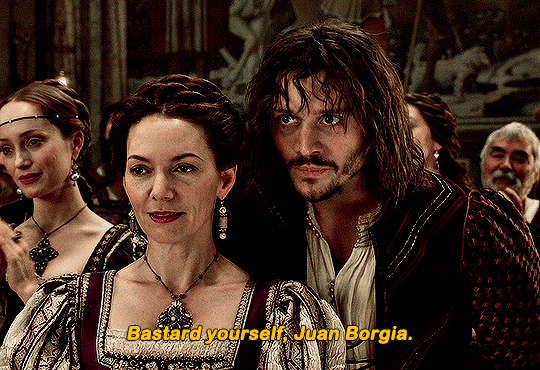






THE BORGIAS | 2.09
#tvedit#perioddramaedit#theborgiasedit#the borgias#vannozza dei cattanei#juan borgia#zanisummers#usermyr#tusereliza#tuserlou#userfish#userzaynab#tuseraixa#userhayf#userclayy#userhann#ours#by tha
584 notes
·
View notes
Conversation
rodrigo: are you calling me a manwhore?
vannozza: i didn't call you a man
25 notes
·
View notes
Photo

That moment when you discover that there is a legit biography out there that puts Vannozza as Giulia Farnese’s mother and puts Giulia as Cesare and Lucrezia’s mother loool.
#vannozza cattanei#giulia farnese#cesare borgia#lucrezia borgia#rodrigo borgia#house borgia#auth: gustavo sacerdote#it's not sacerdote that claims that btw#it's from a writer named P. Ollivier#this story alone made it super worthy of me buying this bio ngl#ajdsjsjfsjfs#what was this writer on when he wrote that??#seriously#not only that#but the dates like....1456??#h o w ???#lmao#i can't
2 notes
·
View notes